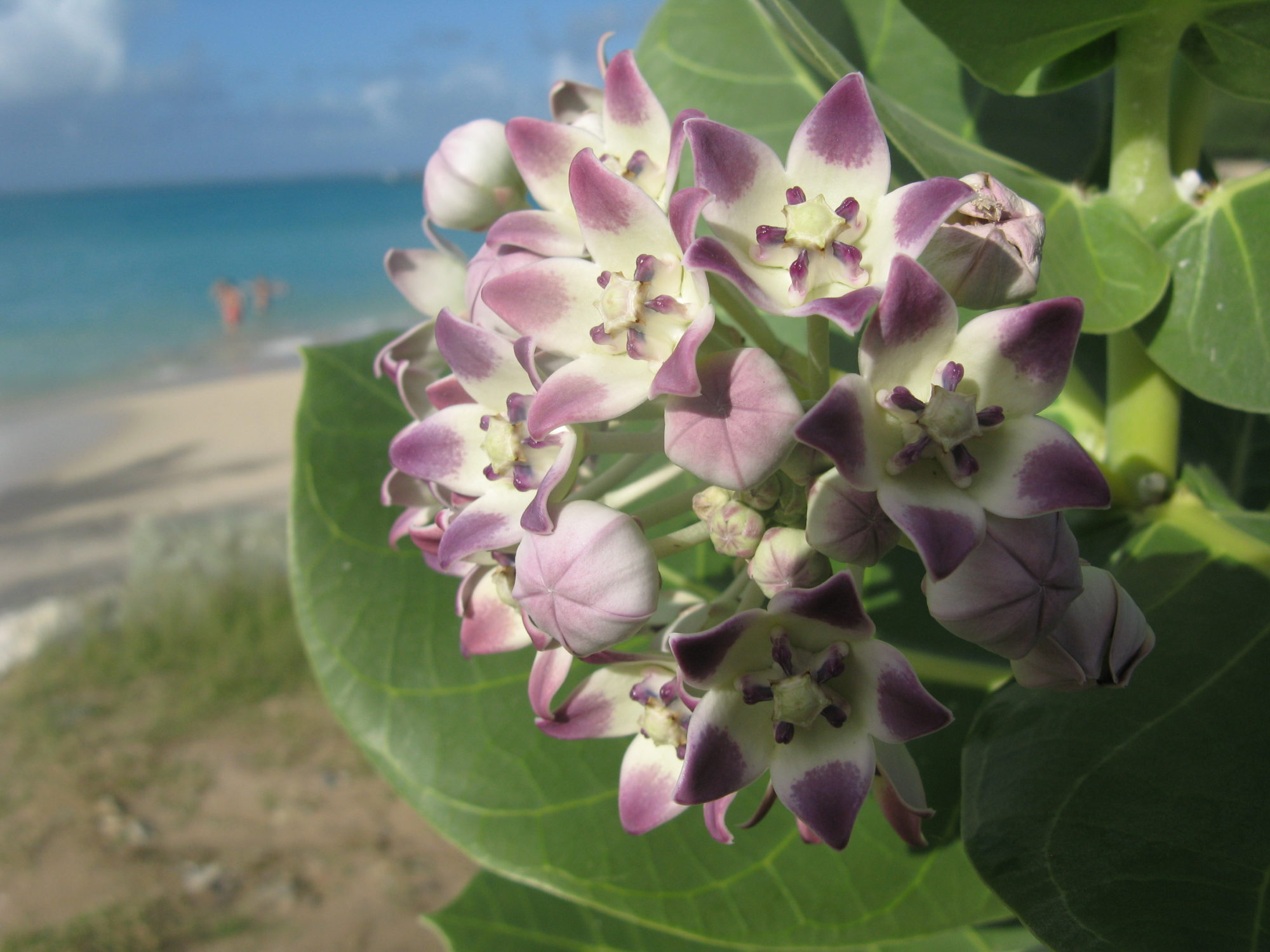My family and I took a trip to the island of Sint Maarten/Saint Martin. There are two different countries on one island: Sint Maarten, a constituent country of the Kingdom of the Netherlands, and Saint Martin, an overseas collectivity of France. This island is part of the Lesser Antilles in the Caribbean. We visited many beaches on both sides of the island and I kept seeing tall milkweed-like plants growing by the water. They were rubber bushes or Calotropis procera. This plant is in the Apocynaceae, or dogbane family. This family includes milkweeds, as well as ornamental plants (like Plumeria or frangipani) and important medicinal plants (like Catharanthus roseus or Madagascar periwinkle, which is a source of anticancer compounds).

Note the five petals and the complex structure in the center of each flower. There are sacks of pollen called pollinia in the center structure. When an insect lands on a flower, their legs can get caught in the slits of the flower’s center. The pollinia are attached to a leg as the insect pulls it out (Calotropis procera, Apocynaceae)
The name ‘rubber bush’ comes from the milky sap, a common trait of the dogbane family. The specific epithet for the rubber bush is ‘procera‘, means tall in Latin. While North American milkweeds can get around two feet tall, this plant can grow to six feet tall (Agroforestry Database: Calotropis procera)!

The center plant is a rubber bush (Calotropis procera, Apocynaceae), which is taller than the cars parked by it. This plant has a nice view of Friar’s Bay in Saint Martin.
Rubber bushes are not native to Sint Maarten/Saint Martin. They are native to the Middle East, northern Africa and central Asia. They are a noxious weed in Australia and are considered to be invasive in many other areas. They have been introduced to California, Hawaii and Florida (CABI Invasive Species Compendium: Calotropis procera).

Rubber bush flowers waiting to hook some insects (Calotropis procera, Apocynaceae)
Rubber bushes have a variety of uses. They have been used as timber, feed for animals and as a fiber plant. The milky latex is used as a poison, as well as a medicine to treat a variety of internal and external aliments (World Agroforestry Database: Calotropis procera).

Tiny monarch caterpillar on a rubber bush leaf (Calotropis procera, Apocynaceae)
Since this plant is a milkweed, it is food for monarch butterflies (Danaus plexippus), my favorite type of butterfly. I raised wild monarch caterpillars for many years and even planted common milkweed (Asclepias syriaca, Apocynaceae) in my mom’s garden for caterpillar food. It was really exciting to find caterpillars munching on rubber bushes!

Cute monarch caterpillar chewing away on some rubber bush flowers. Notice the ants in the flower to the left of the caterpillar. They are looking for nectar (Calotropis procera, Apocynaceae)

One thought on “Rubber bush”